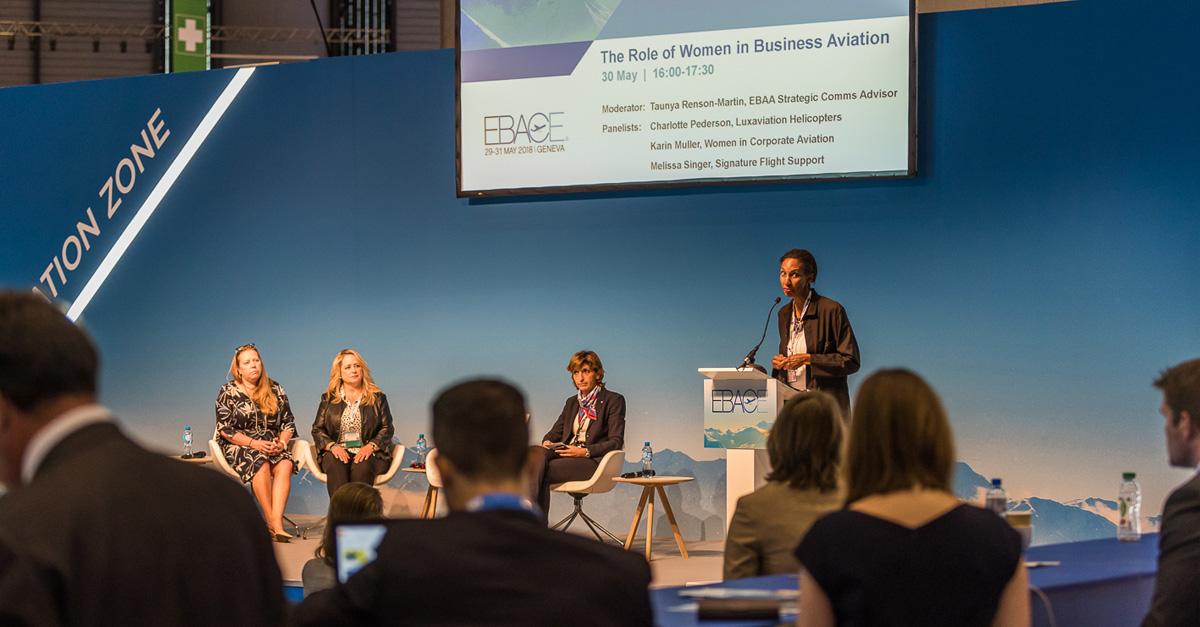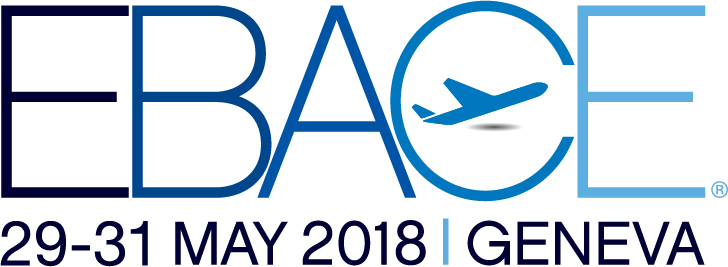At EBACE2018: Expanding the Role of Women in Business Aviation
31 May, 2018
Although more women than ever before now work in business aviation, their representation within the industry remains comparatively small. An education session at the 2018 European Business Aviation Convention & Exhibition (EBACE2018) examined what must still be done to bring more women to the field.

“Women in aviation is not a women’s issue; this is a business growth and sustainability issue, this is an innovation issue, a technology issue, an engineering issue,” said Taunya Renson-Martin, strategic communications advisor for the EBAA and moderator of the session. “A company that does not have access to all the greatest talent available, regardless of gender or culture, is a company that will never reach its fullest potential.”
Luxaviation Helicopters CEO Charlotte Pedersen noted it should be easy to attract women to aviation.
For example, social media continues to be an effective tool for reaching new audiences, and Pedersen called attention to three female pilots with popular Instagram accounts. “Every time these three women post a picture, there’s 1 million youngsters seeing it,” she said. “Women in aviation attract more women into aviation.”
Following the presentation, a panel discussion examined potential career areas for women in the industry, and Karin Muller with Women in Corporate Aviation asserted the sky’s the limit. “There are easily 100 jobs involved between takeoff and landing, and I would invite any women with interest in any of those jobs to apply,” she said.
“This industry is full of opportunities beyond pilot, and I think a lot of young people don’t know that,” added Melissa Singer, senior director of brand extension with Signature Flight Support. “Take a vow to share what makes you passionate about what you do, in whatever aspect of aviation that is.”
Singer also shared the story of a Signature initiative that “wasn’t very popular” at first, but which has since reverberated through the company’s culture. “About nine years ago, we changed our nomenclature for men and women in the field,” she said. “We traditionally had operations managers who were often male, while customer service managers were often female.
“We eliminated both titles,” she continued. “They are now all duty managers, and they are all required to be cross-trained. That way, everyone gets exposure to both roles, and they can decide which side of the operation best suits them.”
Those working now to bring new talent into business aviation may also heed lessons learned by those before them. Pedersen recalled her time as one of just three female pilots in the Danish Air Force, and her own missed opportunities to use that position to encourage other women to pursue aviation.
“[The three of us] could have been great role models, but we didn’t want to stand out; we wanted to be seen as one of the boys,” she said. “The way I approached it then isn’t the way to bring more women into those roles.”

